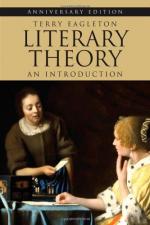
|
| Name: _________________________ | Period: ___________________ |
This quiz consists of 5 multiple choice and 5 short answer questions through Chapter 4, Post-Structuralism.
Multiple Choice Questions
1. According to Eagleton, why did the Russian formalists NOT see a literary work as a vehicle for ideas, reflection of reality, or transcendental truth?
(a) Because they saw language as obtuse, vague, and ephemeral.
(b) Because they saw language as potentially empowering the masses.
(c) Because they saw language as words and not objects or feelings.
(d) Because they saw language as a mode of speech for the wealthy.
2. In structuralism, the relationship between the sign and what it refers to is what?
(a) Necessary.
(b) Identical.
(c) Opposite.
(d) Arbitrary.
3. Eagleton argues that the criteria for what counted as literature in the eighteenth-century was what?
(a) Ideological.
(b) Practical.
(c) Religious.
(d) Canonical.
4. How are "writable" texts different from ones that can be read?
(a) Writable texts encourage the author/writer to reject the reader/critic of the text.
(b) Writable texts encourage the reader/critic to become a producer of the text.
(c) Writable texts encourage the reader/critic to become a consumer of the text.
(d) Writable texts encourage the author/writer to become the reader/critic of the text.
5. Who developed hermeneutics?
(a) Hans-Georg Gadamer.
(b) Roland Barthes.
(c) Stanley Fish.
(d) E.D. Hirsch.
Short Answer Questions
1. What person is NOT included in the ranks of Russian formalists?
2. According to Eagleton, the subject in phenomenology was the source of all what?
3. How do linguists describe the effect of language where "the texture, rhythm and resonance of words are in excess of their abstractable meaning."
4. What year did Terry Eagleton's "Literary Theory: An Introduction" first appear?
5. Eagleton argues that a literary work in Romantic society becomes what rather than rational and mechanical?
|
This section contains 294 words (approx. 1 page at 300 words per page) |

|




